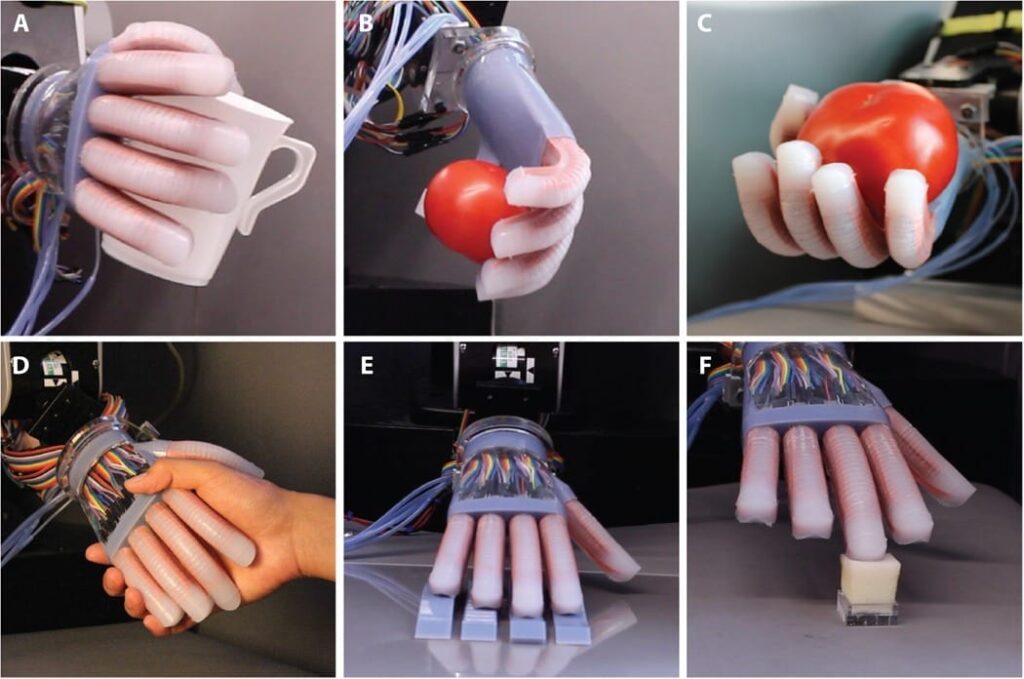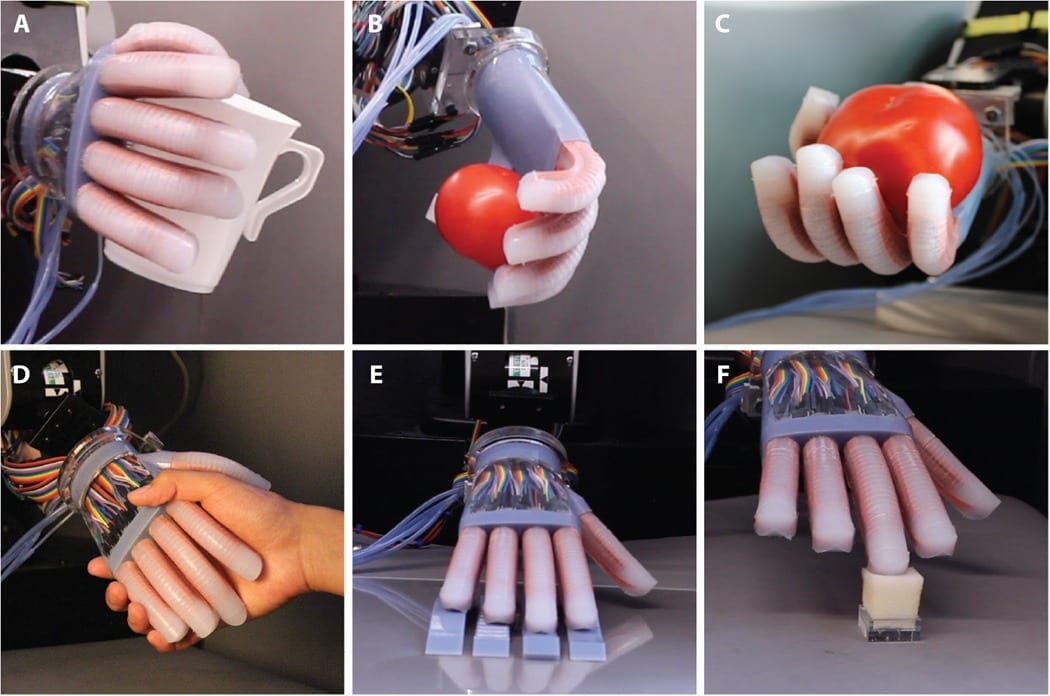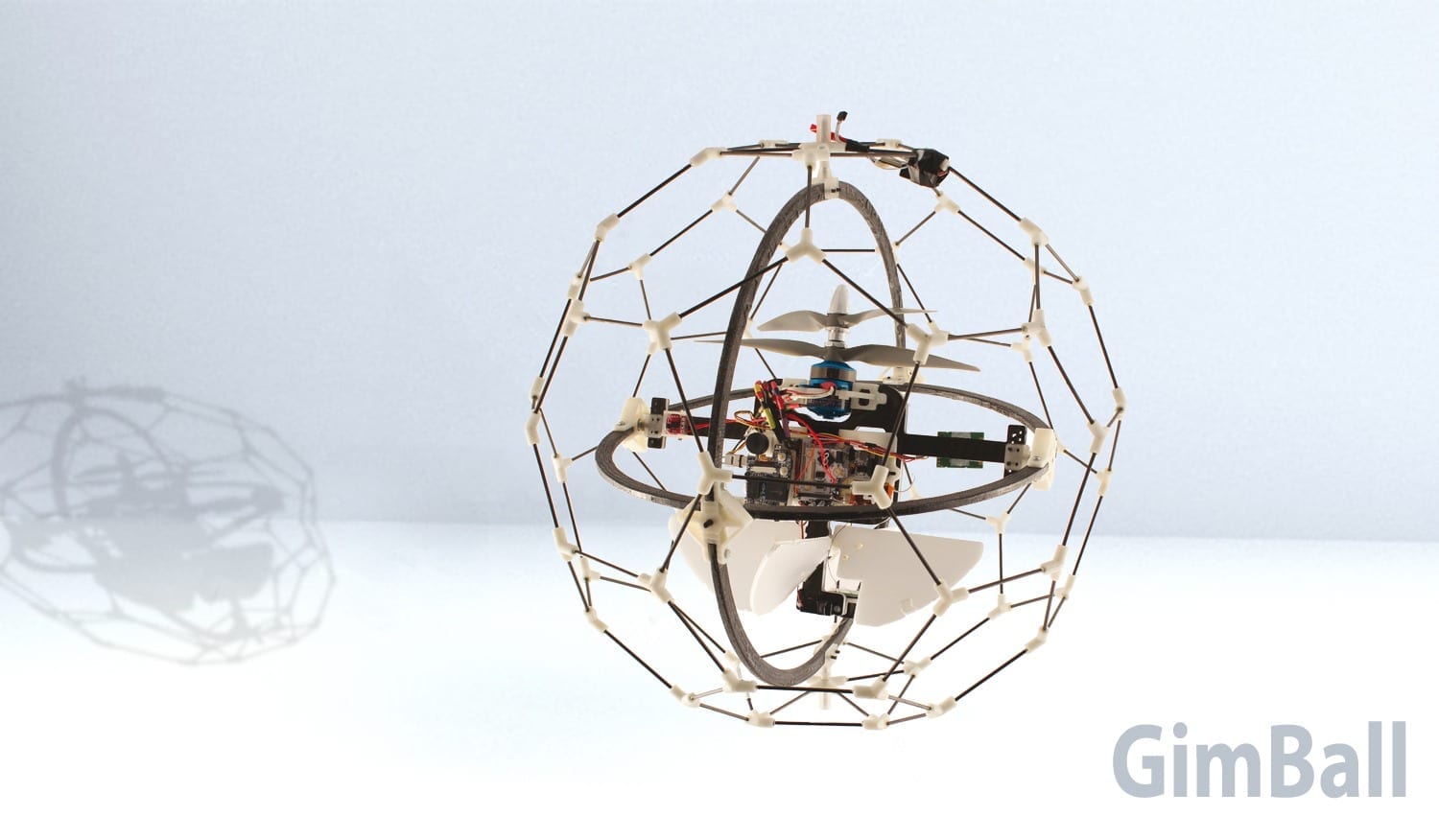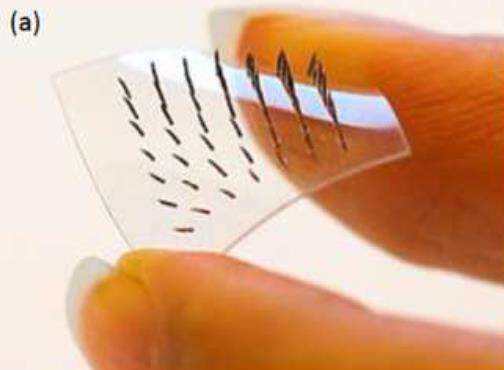
Most robots achieve grasping and tactile sensing through motorized means, which can be excessively bulky and rigid. A Cornell University group has devised a way for a soft robot to feel its surroundings internally, in much the same way humans do.
A group led by Robert Shepherd, assistant professor of mechanical and aerospace engineering and principal investigator of Organic Robotics Lab, has published a paper describing how stretchable optical waveguides act as curvature, elongation and force sensors in a soft robotic hand.
Most robots achieve grasping and tactile sensing through motorized means, which can be excessively bulky and rigid. A Cornell University group has devised a way for a soft robot to feel its surroundings internally, in much the same way humans do.
A group led by Robert Shepherd, assistant professor of mechanical and aerospace engineering and principal investigator of Organic Robotics Lab, has published a paper describing how stretchable optical waveguides act as curvature, elongation and force sensors in a soft robotic hand.
Learn more: New robot has a human touch
[osd_subscribe categories=’robotic-sensing’ placeholder=’Email Address’ button_text=’Subscribe Now for any new posts on the topic “ROBOTIC SENSING”‘]
Receive an email update when we add a new ROBOTIC SENSING article.
The Latest on: Robot touch
[google_news title=”” keyword=”robot touch” num_posts=”10″ blurb_length=”0″ show_thumb=”left”]
via Google News
The Latest on: Robot touch
- TechCrunch Minute: Audible deploys AI-narrated audiobooks. Can it replace the human touch?on May 8, 2024 at 11:01 am
AI is coming for audiobooks, and that is not an entirely bad thing. But it is a cause of concern in the realm of audio titles ...
- Photo reveals ‘secret robot’ attached to China’s Moon rocket that was NOT disclosed before launchon May 8, 2024 at 4:44 am
CHINA may have snuck a secret mini-rover onto the Chang’e-6 lunar rocket that is currently on its way to the far side of the Moon, new images reveal. The Chang’e-6 mission was supposed ...
- Revolutionary artificial skin gives robots a human touch, transforming care and rescue missionson May 8, 2024 at 3:32 am
Scientists have recently created a revolutionary type of artificial skin that is both flexible and capable of simulating the human sense of touch. This advancement is set to transform the ...
- Stretchable E-Skin Boosts Robot Touch To Human Levelson May 7, 2024 at 11:27 pm
This represents a breakthrough in the field of robotics and could potentially transform how machines interact with their environment.
- China has launched a secret robot to the far side of the moon, new Chang'e 6 photos revealon May 7, 2024 at 10:42 am
A tiny, previously undisclosed lunar rover has been spotted strapped to the side of China's moon-bound Chang'e 6 lander in newly released pre-launch photos. The true purpose of the rover, which is ...
- Stretchable E-Skin Could Give Robots Human-Level Touch Sensitivityon May 7, 2024 at 1:21 am
The first-ever stretchy electronic skin could equip robots with the same softness and touch sensitivity as human skin, enabling them to perform tasks that require precision and force control.
- Stretchable skin could give caregiving robots a more human touchon May 4, 2024 at 12:06 pm
Newly developed stretchable electronic skin might soon give robots and other devices the same softness and touch sensitivity as human skin.
- Best robot mops in 2024on May 3, 2024 at 12:49 pm
Robot mops then add pressure and spin over stains for a sleek finishing touch that leaves floors sparkling. While you can always purchase a hybrid robot vacuum and mop design, the performance of ...
- Stretchable e-skin could give robots human-level touch sensitivityon May 2, 2024 at 5:00 pm
Stretchable e-skin could give robots human-level touch sensitivity. ScienceDaily . Retrieved May 7, 2024 from www.sciencedaily.com / releases / 2024 / 05 / 240503111943.htm ...
via Bing News











